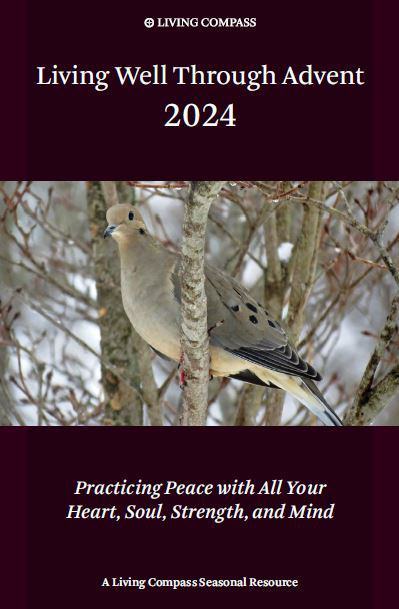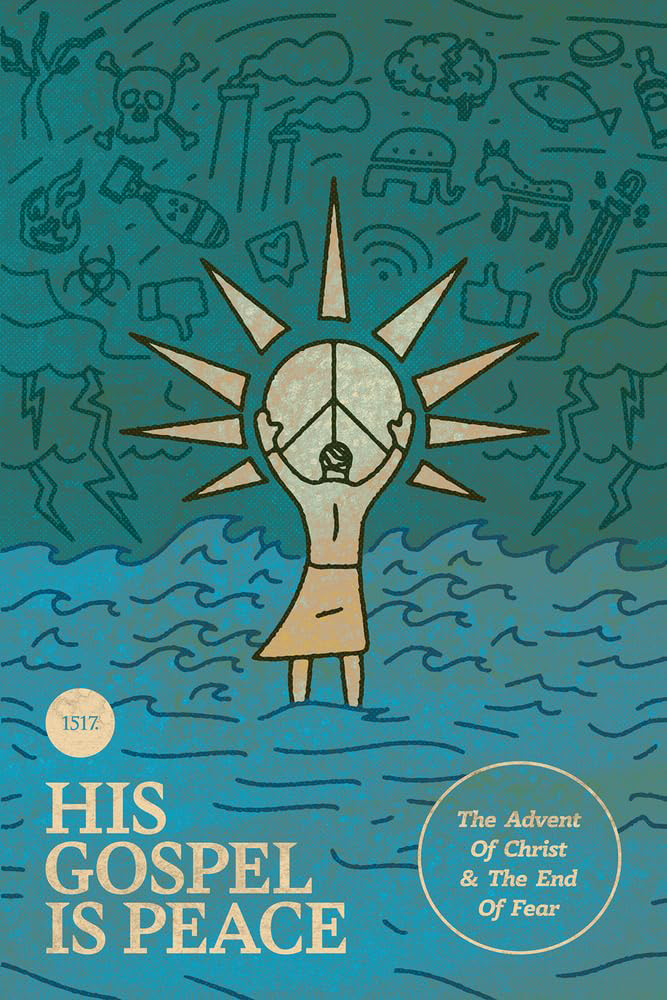
Living Compass produces a book of daily meditations for Advent- “Living Well through Advent which begins Dec. 1
https://shop.livingcompass.org/collections/advent-and-lent-resources The printed copy is $1 and the download is free.
The Living Compass Model for Well-Being offers us guidance in four dimensions of our being: heart, soul, strength, and mind and focus on how they are interconnected. The goal is wellness and wholeness
The theme this year is “Practicing Peace with All Your Heart,
Soul, Strength, and Mind” “The seasons of Advent and Christmas are filled with the presence of peace, if only we remember to pause and open ourselves to receiving this gift.” “Peace on earth” is at the heart of the Christmas story.
Week 1 Peace like a river – Deepening Our Understanding of Peace
“The peace of God is transformative. It changes us from those who would use oppressive power to a people who nurture and tend. The peace of Christ moves us into new places. This holy peace requires that we change and move, not stay stagnant.”
“Peace is not the absence of conflict, but the trust that God can trans-form conflict into reconciliation. Peace is not calm because the disparate voices are silenced, but the courage to stand within the waters of righteous anger, hear the wails of suffering, and work for change. Peace is crossing from the bank of oppression to the side of justice, and having the faith to walk in the shifting sands and strong current that would make us turn back, except that God call us to cross to the side of love … every single time.”
Week 2 Making Peace with Ourselves. Audrey Scanlan reminds us that seeking a deeper peace within ourselves requires honest, soul-searching self-reflection. It is a road less traveled. So much so that Audrey, a person who takes practicing peace seriously, concludes her reflection with the unexpected words, “It was, perhaps, the first time that I had ever practiced making peace with myself
Week 3 Becoming Instruments of God’s Peace. For people of faith, making peace with ourselves is not an end in and of itself, but a necessary step toward our being able to be instruments of peace for others.
Week 4 Practicing Peace as a “Holy Yes”. Responding “yes” to the Spirit is contagious—it goes viral! Mary’s “yes” to carry the Christ child precipitated Joseph’s “yes” to protect and care for them. And their “yeses” led to millions more, thus transforming the world. For Mary it meant bearing the Christ Child under less-than-ideal circumstances and witnessing his crucifixion. Joseph took on the shame of Mary’s unwed pregnancy. Thankfully, our yeses are not carried out alone. Emmanuel—God with us—gives us the grace not only to bear the cost, but also to experience the new life that can only come from accepting divine invitation.




